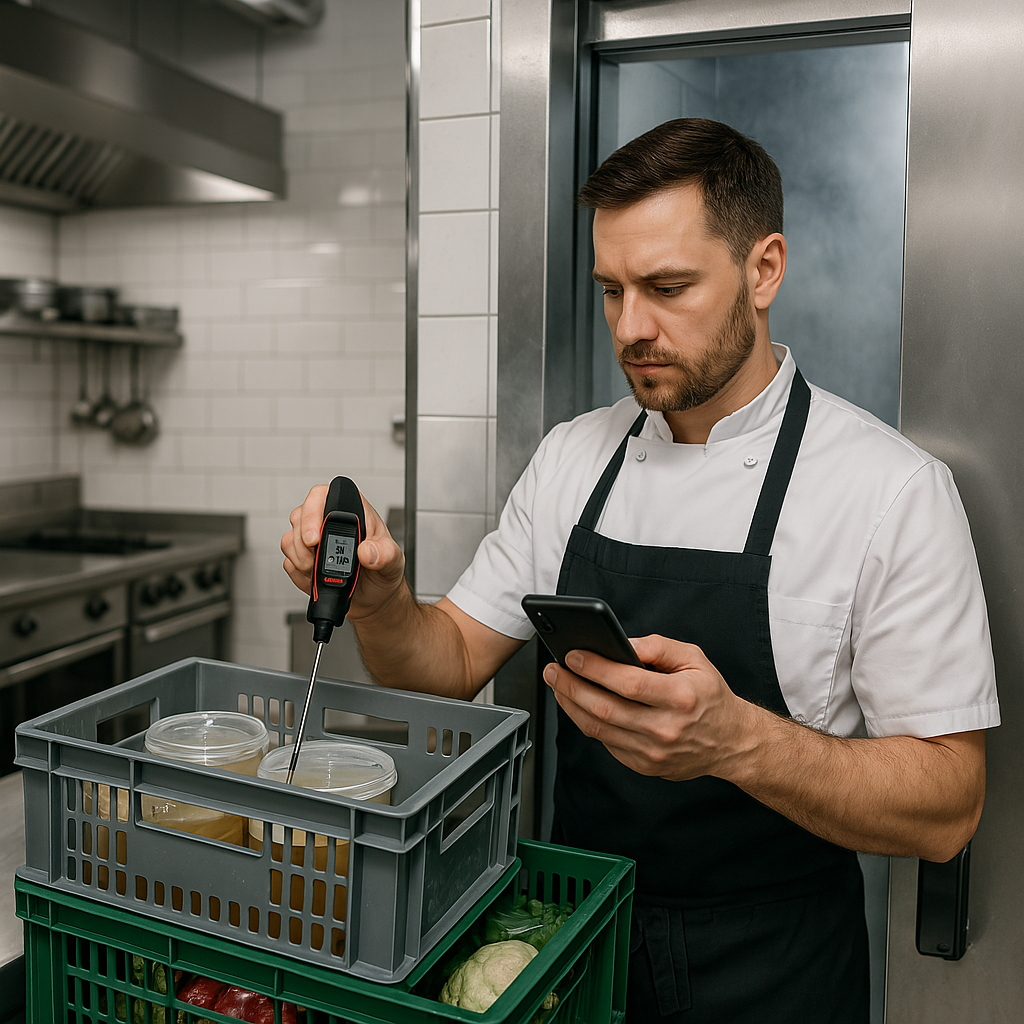
Food safety as we know it has reached its limits. Not because we lack regulations or commitment, but because the fundamental approach is reactive rather than predictive. We wait for problems to occur, then respond with recalls, investigations, and new protocols. This cycle repeats endlessly, with diminishing returns on our investments in traditional safety measures.
I’ve watched the food industry struggle with the same challenges year after year: compliance, traceability gaps, and consumer trust issues. The solution isn’t doubling down on old methods. It’s embracing a fundamental shift toward what I call food safety intelligence.
This isn’t a semantic distinction. It’s a complete reimagining of how we protect our food supply.
Traditional food safety operates on a pass/fail paradigm. Products are either safe or unsafe, compliant or non-compliant. This binary thinking creates blind spots in a system that’s actually filled with complexity.
The limitations become clear when we examine the statistics. Despite decades of regulatory refinement and industry investment, foodborne illness continues to affect millions annually. Our reactive systems can’t keep pace with global supply chains and business operations that grow more complex each year.
Consider the standard food safety audit. It provides a snapshot of compliance at a single moment in time. What happens in the weeks and months between inspections? The truth is, we don’t know. If someone just used the last paper towel and hasn’t replaced it yet – that’s a fail. Can’t locate the Pest Control Certificate? That’s a fail.
This uncertainty creates risk. It also explains why only 20% of global consumers place complete trust in companies to ensure food safety. The trust deficit isn’t just a perception problem. It reflects the genuine limitations of our current approach.
The core issue is that traditional food safety was designed for a simpler world with shorter supply chains and fewer variables. Today’s food system demands something more sophisticated.
Food safety intelligence represents an evolution beyond traditional safety practices. Where food safety reacts to problems, food intelligence predicts and prevents them. Where food safety measures compliance, food intelligence measures risk continuously.
The transformation is being driven by three key technologies:
Artificial Intelligence and Machine Learning
By 2025, AI adoption across the food industry will reach unprecedented levels. AI-powered systems are being deployed to automate monitoring, detect contamination in real-time, and optimize cleaning schedules for equipment.
These systems don’t just collect data. They analyze patterns across thousands of variables to identify potential risks before they become problems. A temperature fluctuation here, a delayed shipment there – individually, these might not trigger alarms. Combined and analyzed through AI, they can reveal emerging risks invisible to human observers.
Internet of Things (IoT) Sensors
The proliferation of affordable sensors has transformed how we monitor the food supply chain. Temperature, humidity, ethylene levels, door open alarms – these can now be tracked continuously rather than periodically.
Real-time monitoring means real-time intervention. When conditions drift toward unsafe parameters, automated alerts trigger immediate action. The days of discovering problems during an audit or after consumers fall ill are coming to an end.
Predictive Analytics
Perhaps the most powerful aspect of food intelligence is its predictive capability. By analyzing historical data alongside real-time inputs, these systems can forecast potential issues days or weeks before they manifest.
Digital transformation is revolutionizing food safety through predictive analytics that identify patterns and forecast potential risks before they occur. This shift from reactive to proactive approaches allows for more targeted supplier audits and strategic sourcing adjustments, creating a greater margin of safety than traditional methods ever could.
Despite the technological revolution underway, food intelligence isn’t about removing humans from the equation. It’s about augmenting human expertise with tools that extend our capabilities.
Food safety professionals aren’t being replaced. Their roles are evolving from inspectors to analysts, from reactive problem-solvers to proactive risk managers. The most successful organizations recognize that technology alone isn’t the answer – it’s the integration of advanced systems with human judgment that creates true food intelligence.
Training and cultural change are as important as the technology itself. Companies that invest only in systems while neglecting the human element will fail to realize the full potential of food intelligence.
The transition from traditional food safety to food safety intelligence won’t happen overnight. Legacy systems, regulatory frameworks, and organizational cultures all create inertia that slows transformation.
Yet the direction is clear. Companies that embrace food intelligence gain competitive advantages in operational efficiency, risk management, and consumer trust. Those that cling to traditional approaches will find themselves increasingly vulnerable to risks their systems can’t detect and problems they can’t prevent.
Regulatory frameworks are beginning to evolve as well. As regulations adapt to support technology-enabled approaches, the pace of change will accelerate.
The most forward-thinking organizations aren’t waiting for regulatory mandates. They recognize that food safety intelligence creates business value beyond compliance – in operational efficiency, waste reduction, and brand protection.
Food safety isn’t dead. It’s evolving into something more comprehensive and effective. Food intelligence builds upon decades of safety science while transcending its limitations.
The future belongs to organizations that can predict and prevent issues rather than merely detect and respond to them. It belongs to those who can provide transparency that builds trust rather than opacity that erodes it. It belongs to those who recognize that in a complex, interconnected food system, intelligence is the ultimate form of safety.
The revolution is already underway. The question isn’t whether food intelligence will replace traditional safety approaches, but how quickly organizations will adapt to the new reality.
Those who embrace this transformation will not only protect consumers more effectively but will also discover competitive advantages and operational efficiencies that create lasting value. The death of traditional food safety isn’t something to mourn – it’s the birth of a more intelligent, effective approach to protecting our food supply.
Long live food safety intelligence.
If you are confused by the options and want to explore the best systems for your business, call Trinity at EnviroChill today – 0415 168 729.